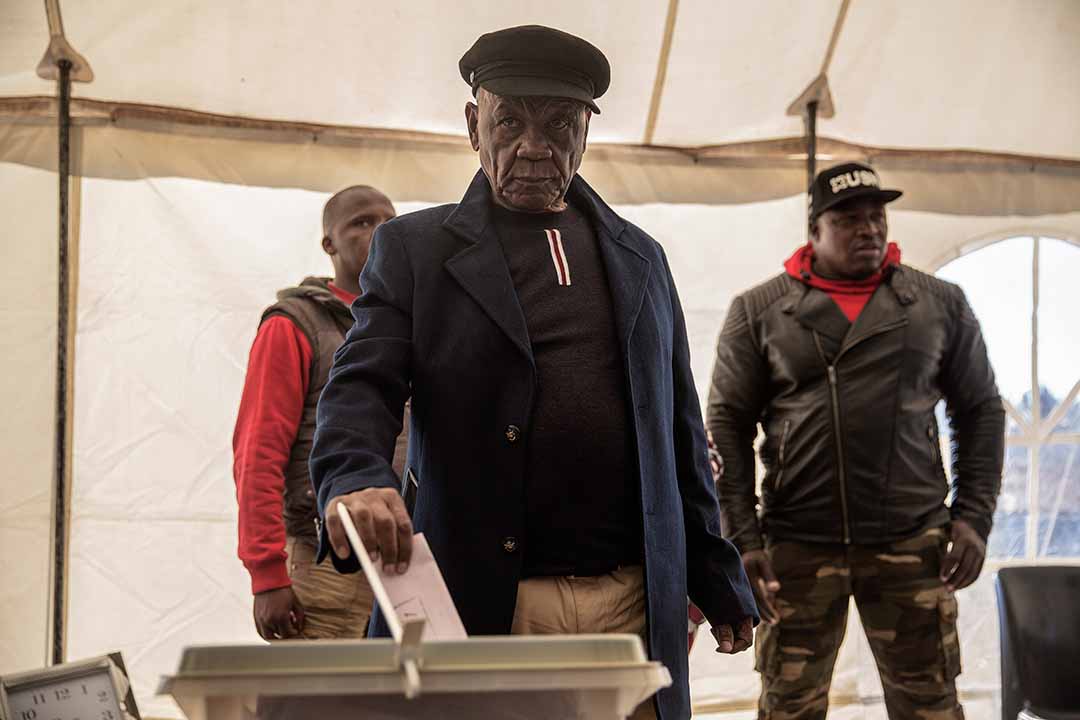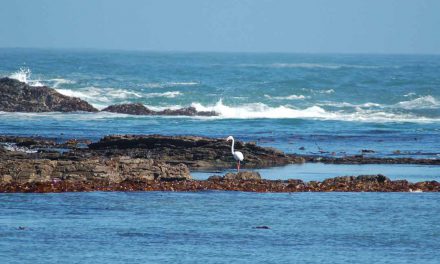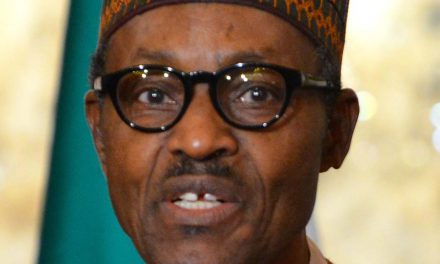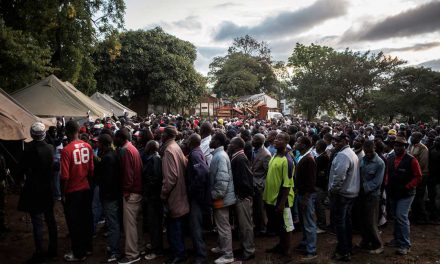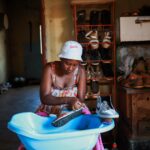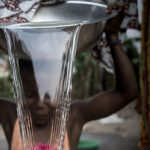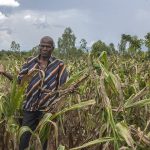Peace journalism: West Africa
Conflict-sensitive journalism must ensure inclusive and impartial coverage, with the media fulfilling a role as “appeasers”
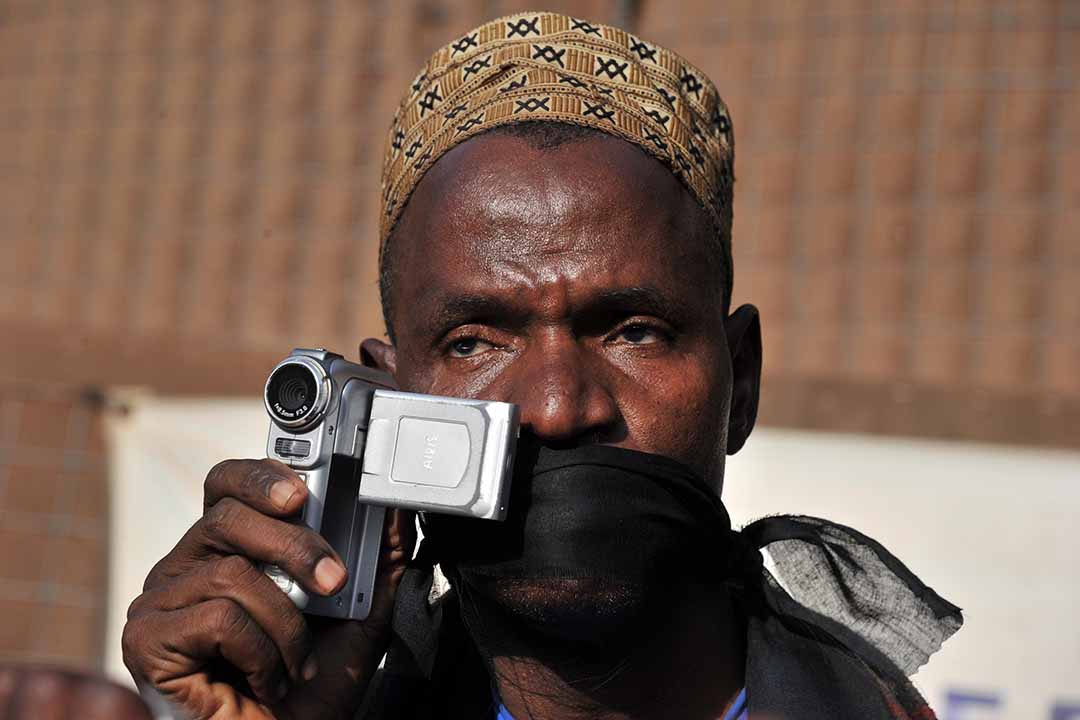
A Malian journalist takes part in a march in Bamako in memory of radio journalists Ghislaine Dupont and Claude Verlon from Radio France Internationale who were in killed in Kidal after being kidnapped, 2013 Photo: STR / AFP
The media today have a considerable influence in society. They shape the values of individuals, and therefore have a significant, though indirect, impact on all society. The role that “hate media” played in the Rwandan massacre has become a textbook case of the harmful role the media can play in the emergence or exacerbation of conflicts. Similarly, the media played a role in exacerbating violence in Côte d’Ivoire in 2002 and during the post-electoral crisis of 2010. The partial and partisan treatment of information, disinformation and propaganda in situations as delicate as conflicts and political crises contribute greatly to poisoning the social climate and radicalising viewpoints. The media are not neutral vectors of information; in some situations they may be responsible for the difference between peace and war. As Bernard Dagenais (1993: 57) pointed out, “in times of crisis, the media are full actors”. Or as Douglas Kellner (1990) put it, the “enslavement of the media” to established powers fuels democratic crisis, exacerbates conflicts and, by extension, a disrespect for human rights.
The majority of researchers who have examined the role of the media in time of crisis conclude that the media, although omnipotent, are doing a poor job: they have no historical insight, they discard any in-depth analysis of the challenges of crisis, they speak on behalf of the authorities and put more emphasis on the results than the causes of conflicts. However, this radical position is qualified by the reflection that the media can also be used for the better. The media are “double-edged tools”, to use the expression of Canadian journalist Ross Howard. If political crisis is a cyclical element in some West African countries, and if the media are the agents of social communication through which a crisis becomes public, then the media, peace and human rights relationship becomes a key factor in the fight for democracy. Crisis situations (real or anticipated) provide privileged moments to study the interdependence of media institutions with the societies in which they operate. In an era marked by globalisation and technological progress, the role of the media and information professionals in peace-building processes has become central, especially in covering political conflicts.
From this point of view, peace journalism or conflict-sensitive journalism is a prerequisite for world stability. But what does the expression “peace journalism” or “conflict sensitive journalism” mean? Peace journalism was launched in the 1970s by the Norwegian political scientist Johan Galtung. It gained wider interest and support from professional journalists in developed and developing countries in the 1990s, as well as attracting civil society activists, and academic researchers interested in dealing with conflicts and crises in the media. It offers a set of plans, evaluation criteria and practical options to media professionals that can be used to develop critical analysis of war journalism, all derived from, or at least attentive to, proposals on conflict, violence and peace. The aim of peace journalism is to place events relating to conflicts in a broad and fair context, that does not cater to partisan, political and economic interests. It seeks the causes of conflicts and solutions in each camp; it gives the floor to all parties involved; it focuses on the conflict rather than the opposing parties; it is cognisant that its coverage of conflict can have repercussions; and it aims to establish a moderate discourse focused on non-violence.
Jake Lynch and Annabel McGoldrick, in their book Journalisme de paix. Qu’est-ce que c’est ? Et comment l’exercer? (Peace Journalism. What is it? And how to exercise it?), distinguish between journalism of peace and journalism of war. They maintain that the daily practices of war journalism incite, favour, and stir up social conflicts. On the other hand, peace journalism organises its skills around the preservation or consolidation of peace. In a 2010 book, Reports on Conflicts: New Directions in Peace Journalism, Jake Lynch and Johan Galtung present case studies of media coverage in Korea, Yugoslavia and during the Gulf War. These case studies laid the groundwork for a peace journalism that is applicable to many conflicts. Its fundamental principle is that media and information professionals need to underline the common points between parties to the conflict, rather than focusing exclusively on the differences. That is, tell the story from all sides. But this approach also raises questions about whether it is possible to implement it in accordance with the professional rules which govern the practice of journalism.
In the processing of news, should peace journalism be objective and impartial? Defenders of peace journalism argue that journalists cannot be neutral if their goal is to build social stability and promote peace. From this point of view, objectivity is compromised by the desire to ensure a social stability. Peace journalism, they claim, is prone to “punch” when it criticises, while omitting controversial facts or difficult issues in conflict. “The media can be an ‘instrument’ of conflict resolution when the information they present is reliable, respect human rights, and represent various viewpoints,” argues Ross Howard, whose two books, An operational Framework for Media and Peace (2002) and Conflict-Sensitive Journalism ( 2003), have been influential. Peace journalism can advocate for accountability and expose embezzlement. It can help members of society to make informed choices, which is the forerunner of democratic governance, he argues. From this perspective, “peace journalism” can have the following positive functions:
• Constitute a means of communication between the protagonists;
• Correct the misperceptions of personalities and lead experts to explain themselves clearly;
• Show a more human aspect of the other;
• Highlight the human dimension of the conflict by associating names and voices with it and providing personal accounts;
• Provide an outlet for listeners, readers, viewers but also the protagonists. Get them to consider the problem in a different way or give them the opportunity to learn from solutions found elsewhere;
• Generate solutions. Peace building includes all activities that help overcome organised violence and maintain peace.
The general aim of peace building through peace journalism is therefore to prevent the eruption of violence in conflict, or to transform armed conflict or crisis in the long term into peaceful and constructive forms of dispute resolution. Peace building, through journalism that promotes peace, could appear in three structuring phases of crisis or conflict situations:
1. Prevention to avoid the escalation of violence before the crisis or the conflict;
2. Conflict management or restoration of peace to put an end to violence and lead to a peace treaty (the media and journalists are mediators and moderators);
3. The consolidation of peace to stabilise it after conflict or war.
Media that participate in war discourse play a considerable role in spreading hawkish attitudes, and thereby help to underwrite a public view that is favourable to war. In this mode, media produce symbolic warrior identities that engage members of the public as actors engaged in war. An enemy is presented as a collective threat, a collective identity to be destroyed. This can be the case with respect to bearers of the same nationality, as is the case in civil wars. During the 1990-1991 Gulf War, US and British war-supporting media accentuated the delegitimisation of the Iraqi president, Saddam Hussein. Following the 9/11 attacks in the US, some politicians presented hostilities against Al-Qaeda as legitimate, with their attacks seen as a declaration of war. Media were an integral part of the war apparatus, with the aim of legitimising the American intervention in Iraq. So, a belligerent state was instituted as an actor legitimately wielding violence, and the adversary is demonised. The case of Radio Television Libre de Milles Collines (RTLM) in Rwanda is a much-quoted example of “hate media”.
This private radio station helped to create a climate of terror among the population that culminated in the Rwandan genocide of 1994. RTLM served to legitimise the massacres of Tutsi and Hutu opponents, directly incited the massacres and provided practical information to the perpetrators of the genocide to facilitate the killings. According to Marie- Soleil Frère, hate propaganda reinvents history, manipulates facts, and uses victimisation, dehumanisation and animalisation of the Other. Contrary to such a stance, peace journalism does not hold a hawkish discourse, not in designating an enemy to kill, or in legitimising conflicts, but in acting upstream to avoid a risk system often resulting from the combination of four factors highlighted by Philippe Hugon (2006; 35):
• Structural: linked to underdevelopment, characterised by the vulnerability and exposure to risk of populations with low resilience due to insufficient availability, market failures, absence of rights and capacities or dysfunctions in the allocation of resources;
• Cyclical, exogenous and endogenous shocks: linked to sudden and unexpected events leading to a strong disturbance of the system and to an unregulated propagation;
• At an institutional and political level: characterised by absences or shortcomings in prevention (monitoring cells, alert systems) and regulation, by instrumentalisation (unemployed young people, religious, politics, or ethnicity);
• Informational: the paroxysmal crisis always responds to a lack of information and to propaganda carried by the political powers and the media.
During wartime, the media, from a “peace journalism” perspective, ensure minimal expression in public space of the expression of symbolic identities and political representations. They ensure the sustainability of the commitments that underpin us, to the extent that, in wartime, the expression of identities is stronger because war is a time of exacerbation of political cleavages and symbolic identities. The media construct, in a way, the symbolic permanence of the institutional fact, at a time when political institutions and sociability are in crisis and, in a way, in a waking state. Communication, whether through the media or through institutional actors, consists during the war of pursuing the representation of the country and the state and, thus, in perpetuating the situation of political and social secularity which allows inhabitants of a country, even in a state of suspension of the institutional relations, to recognise themselves in their common identity and to recognise powers and institutions. The media ensure a permanent confrontation between the realities of the war. Doing so, they allow the symbolic appropriation of the war by members of the public, and, consequently, the confrontation of their effective practices of sociability with the events which threaten their collective identity.
In this sense, the media ensure the symbolic presence of war in public space, they prevent the state, the country, the game of identities, from foreclosing war, or to be foreclosed from it, by obliging us, by its presence in the media, to take a position in relation to it and to institute our political identities in relation to the war. Finally, the media build the memory of the war as it unfolds: they have a function of recording events, both for the memories of those who experience them, and who, thus, will keep their memory after they are finished, and for those who do not know them, but who will be the depositories of this memory in the political conscience of their identity. What emerges from these positions is that conflict-sensitive journalism must ensure inclusive and impartial coverage of information. In this way, the media and journalists do not appear only as mere informants or observers of the crisis or conflict situation, but also and above all as “appeasers”. This role of appeaser is all the more remarkable since the latter must not lean towards one or the other of the parties of the conflict, but must contribute to bringing calm by reporting facts without comment.
In Mali, Radio Daande Douentza has made a large contribution to the transformation of a conflict between breeders and farmers in the Timbuktu region. Conflict-sensitive journalism was illustrated through journalistic production on three levels. Initially, the station reported incidents between breeders and cultivators to allow the regional administration to react quickly; then it allowed farmers to announce on the radio when they had finished harvesting. The herdsmen who listened to the radio thus knew when they could cross the fields without damaging them, and therefore in complete safety. Finally, a series of programmes was repeatedly broadcast reminding breeders and farmers of the collaboration that had always existed between the two groups. Here, media served as a link between conflictual parties. In addition, they were able to make the link between the community and the central government or with other actors. By creating a dynamic of exchange, the media facilitated interactions between the different actors. The post-crisis period is always a period of transition. Discourses and communication strategies can be used to prepare for the post-war period, by fair representations of the actors, thus organising, on the symbolic level, a real implementation of political power and institutions.
The media represent an international public space: they stage a kind of diplomatic activity which can help to organise the powers and political actors of the post-war period. By reporting on the negotiations and the preparation of peace, they reveal the reformulation of the political identities restructured during the conflict and provide the instruments which allow the assessment of the balance of powers born during the war. This was the logic behind the Talking Drum Studio radio programme Leh wi mec salone (Let’s build Sierra Leone) founded in 2000. Hosted by veterans from opposing factions, it was initially intended to encourage combatants to return to civilian life. In addition, the peace media approach can also articulate an internal public space dominated by local actors and political identities. By doing so, they help to mediate these elements with institutional strategies and practices in international public space. In other words, in this phase the media represent internal political identities to the external world, which includes other countries, mediators of the international community, and actors of stakeholder organisations. This approach is sometimes said to constitute a kind of appeasement, and it can be precarious. Specifically, it means implementing a journalistic practice capable of reconciling the parties involved in the conflict or crisis.
The main objective is to contribute to the (re) construction of thoughts, visions and hearts that have been suppressed, or hidden. Peace journalism aims to have a positive impact on conflicts and to contribute to their prevention, or resolution. It can be a difficult concept to delimit. Mainly, the challenge is to identify the necessary skills and the criteria of a journalistic practice encouraging peace. In Galtung’s terms, these criteria can be understood as the opposite of journalistic work that encourages violence against those who promote peace. The major challenge for journalism in the West African zone is to advocate, through professional practices, a real model of information processing that corresponds to that of peace media and “peace journalism” while guaranteeing the independence of the media in times of crisis or in conflict zones. By contributing to sensitive information processing in conflict situations, the media can begin to provide solutions to the challenges of peace.
MOUMINY CAMARA is a research professor in semiology with the Department of Communication at the Centre for Scientific and Technical Studies of Information at Cheikh Anta Diop University in Senegal. His PhD thesis at the University of Lyon covered the topic ‘Mediation in warlike situations in West Africa: the case of Ivory Coast’, and was supervised Bernard Lamizet.




